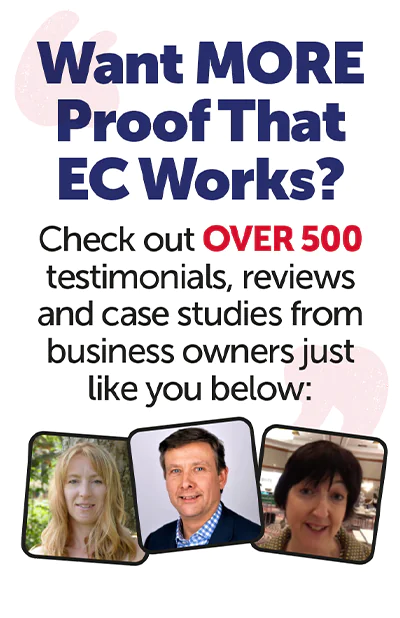
Purely by chance, I did a glut of 1:1s in August with people whose businesses, to some extent or other, involved consultancy or the provision of high-end services to businesses. Something of a pattern emerged. None of them were luxuriating in dozens of surplus clients and all told me how hard they were finding it to close business and get people to commit.
“I’m offering a free consultation where prospective customers get access to me and I solve a problem for them without devaluing what I do,” said one member, “and I am getting take up on that.
“I’ve had some good consultations and conversations but they haven’t led to a single sale. Nothing. No business”.
This call was typical, which is why I thought it might be helpful if I shared some of my advice more widely here (oh, and don’t switch off at this point if you’re not a consultant. Much of this applies elsewhere as well. Ask yourself how you could use it in your business).
Three Mandatory Steps to Getting Consulting Clients:
1. You have to talk to the person who writes the cheques.
What often happens, particularly if you’re dealing with large organisations, is that people get into conversation with individuals in the company who can say no but can’t say yes. Complete waste of time. You’ll never get anywhere – and your qualifi cation process has to get to the nub of that question and make sure that the time you’re spending in front of that business is with the right people. Pointless doing it if you’re not.
2. If you’re having conversations but not getting conversions, then it’s almost certain that you’re not getting to what my friend Perry Marshall calls: “A vivid, ugly bottom line reality of how expensive their problem is.”
I’ve seen it myself when people have come to pitch to me. The conversation meanders around the problem but it’s all a bit too fluffy and woolly.
It reminds me of one of the first clients I ever got when I set up N5 back in 2003. I was a marketing consultant back then and my business was predicated on me having a small number of companies that paid me a fixed fee each month. I remember one particular business really clearly. They were an IT-based operation, and when I got the meeting with the CEO, we talked about all kinds of stuff – his products, his plans, all the people that worked for him, but the reality was that we were going nowhere until we started talking about how much it was costing him – and how much effort it was taking – to get a new customer. All told, we uncovered during that initial meeting that a new customer was costing them something like £10,000. Getting to that number was critical. Once we got there, the problem was defined. It was very straightforward then for me to craft a case that solved his problem.
3. The fact is, a lot of these consultants that I’ve been talking to are not proving, beyond all doubt, that they can solve their potential clients’ problems for less than it costs, i.e. that the solution is less painful than the problem. That’s the key.
In the case of my IT client, he had a £10,000 per customer acquisition cost and I told him that I could get that down to under £5,000 per customer. He agreed to a three-month trial, paying me £2,000 a month because all I had to do was help him get one customer for less than £10,000 and I’d be paying for myself pretty quickly.
He knew from my track record that I had the skills to do this because part of my job at that point was to PROVE that I could do it.
When you prove beyond all doubt that you cost a lot less than the problem is costing then your conversion ratios will rocket, I promise.
To be clear, all three of these steps need to happen. They are mandatory. You can’t miss one of them.
In super-short language, if you’re providing consultancy or any other service to businesses, then you’ll rarely get contracts unless you talk to the big cheese;
You need to assign pound and pence value to the problem…
…and then make them vividly visualise that money slipping away and prove that you can solve that problem for less than it’s costing.


